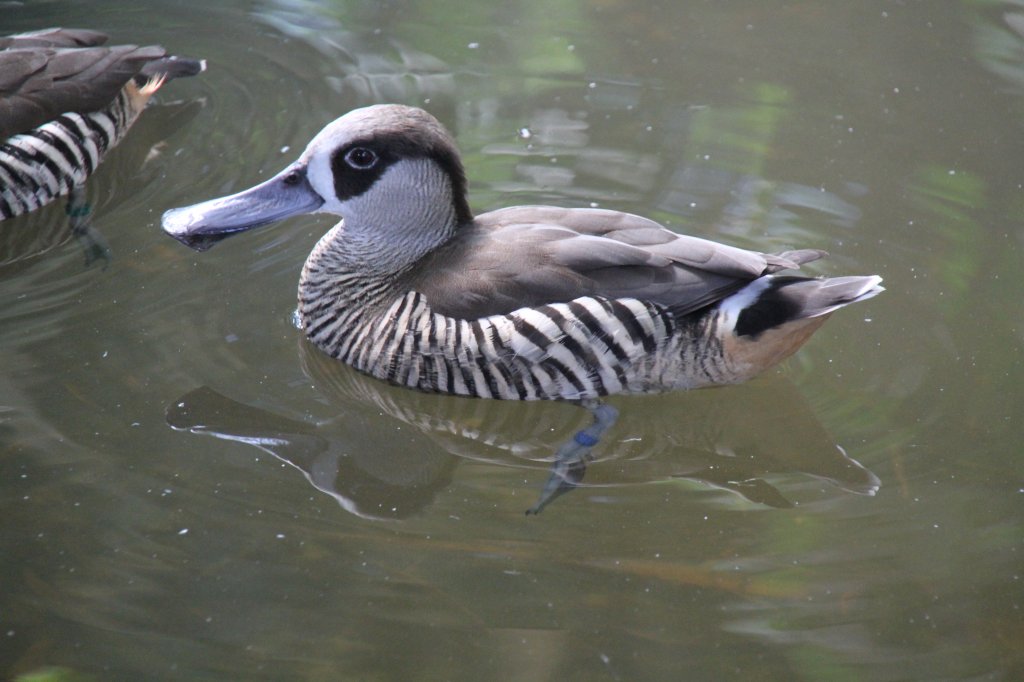
Pink-eared duck(Malacorhynchus membranaceus)
Phylum —chordata
Class — aves
Order — anseriformes
Family — anatidae
Genus –malacorhynchus
Appearance
The pink-eared duck is a small duck with a huge square-tipped grey bill and strongly barred brown flanks. It has a large brown eye patch on a white finely barred face. There is a small pink patch behind the eye. Upper parts are brown, underparts white barred dark brown. The upperwing is brown with a white trailing edge and the underwing linings are white, finely barred brown. In flight, there is a bold white crescent on the rump.
Length – 36-45 cm, weight – 270-480 g.
Habitat
Widely distributed throughout Australia and highly mobile, these ducks can appear anywhere there is standing water, especially in dry inland regions, where annual rainfall rarely exceeds 15 in (380 mm).
Behavior
Even whilst in large flocks, the pink-eared duck remains in pairs. They often perch out of the water, e.g. on logs and branches. They fly with rapid wing-beats, and when flushed will circle wetlands.
Diet
The bill of the pink-eared duck is lined with fine lamellae for filter-feeding. The diet is mostly invertebrates (crustaceans and insects), and plant-matter including seeds.
Reproduction
Breeding can take place all year round and is dependent on floodwaters. The nest is a rounded mass of down placed in a hollow or on a stump above the water. Pink-eared ducks usually take over nests built by other birds, especially the Eurasian coot, Fulica atra, and the black-tailed native hen, Gallinula ventralis. Pink-eared ducks form monogamous, probably life-long pair-bonds. The female incubates the eggs, and both parents brood the young.
In captivity
Lifespan can reach 20 years.
Ducks feel great on the territory where there are tall grasses, shrubs and trees. One of the conditions of keeping ducks is a deep reservoir, which is necessary for this species of duck both for swimming and for feeding.The area of the fenced yard should correspond to the number of birds contained, providing it with the opportunity to retire and hide.Small shelters on the top of the open area in the form of sheds, huts and booths are necessary as shelters from birds of prey, bad weather, as well as for overnight stays.
Building aviaries, you should take into account the desire of the bird to fly. Owners usually cover them from above or make regular trimming of the wings.
It is important to provide pairs of ducks with a brood with the opportunity to graze on fresh grass or give access to shallow reservoirs overgrown with aquatic vegetation (duckweed, reeds, etc.). Such conditions of keeping contribute to better preservation and growth of young birds. Daily bathing under the control of adult birds is safe.
 Russian
Russian
 English
English
























